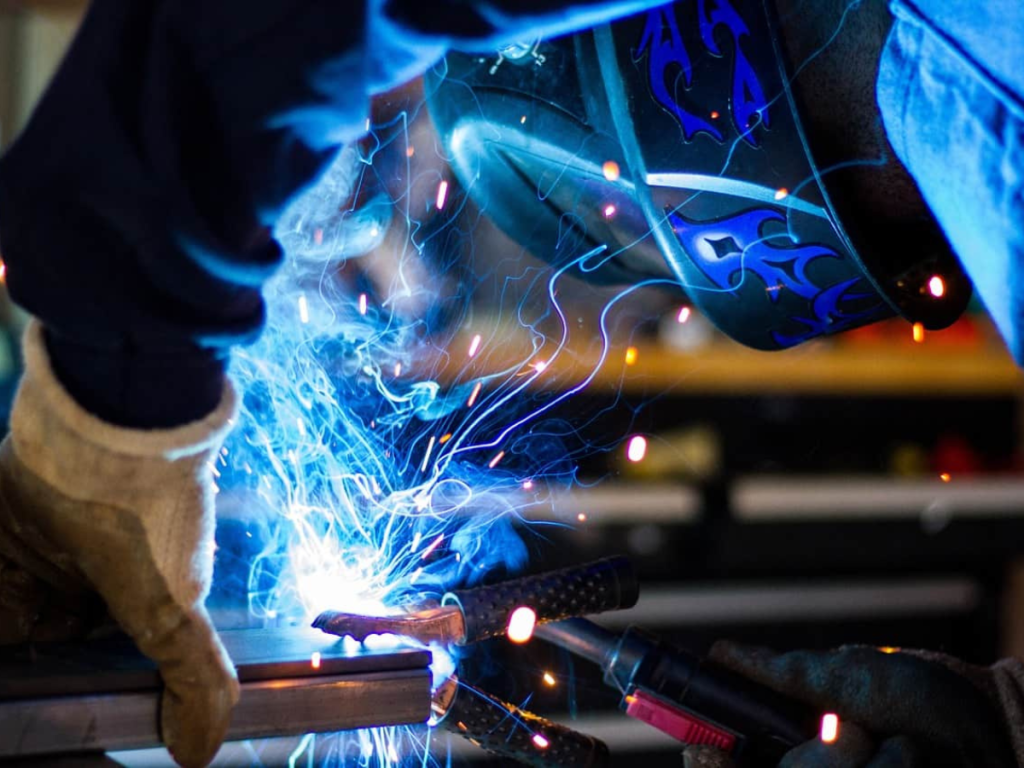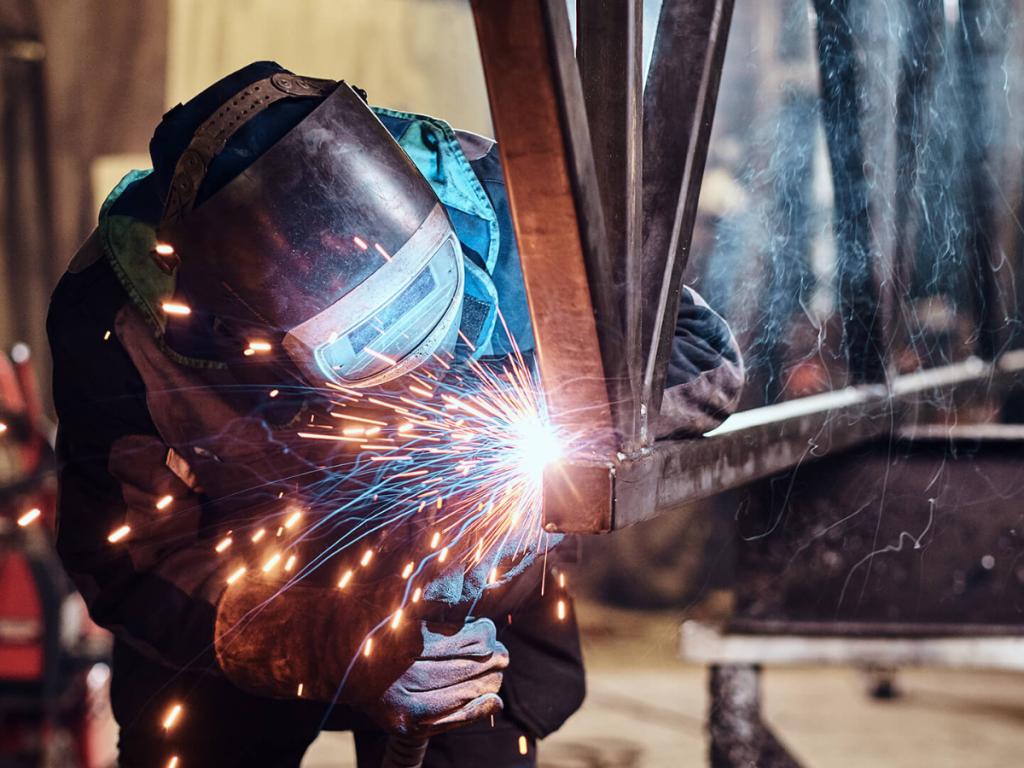Do you need to weld stainless steel? If so, pay close attention – there are a few things you need to know before you get started. Stainless steel welding can be tricky if you’re not familiar with the process, but with the right tools and techniques, it can be a breeze. In this post, we’ll go over everything you need to know to get excellent results when welding stainless steel. Stay tuned!
Is stainless steel difficult to weld?
Is stainless steel difficult to weld? The answer to this question depends on a number of factors, including the type of stainless steel being used and the welding method being employed.
In general, however, stainless steel is considered to be more difficult to weld than other types of steel. This is because it is more resistant to heat, making it difficult to create a strong weld joint. Additionally, stainless steel tends to form oxides when heated, which can create problems during the welding process.
As a result, it is important to have a good understanding of welding before attempting to weld stainless steel. With the right knowledge and preparation, however, it is possible to produce high-quality welds on stainless steel.

Can you weld Stainless Steel?
Stainless steel is a type of steel that contains chromium, making it resistant to rust and corrosion. Because of these properties, stainless steel is often used in food preparation and medical equipment. The welding process joins two metals by subjecting them to high temperatures then cooling them so that they form one solid piece.
Stainless steel can be welded, but it requires different techniques than welding ordinary steel. In addition, stainless steel tends to form a hard oxide layer when exposed to high temperatures, which can make the weld weak and brittle. For these reasons, it’s important to have the proper equipment and training before attempting to weld stainless steel.
Is Welding Stainless Steel Dangerous?
This is a question that many people ask, especially those who are new to the welding field. Stainless steel is an alloy that contains chromium, nickel, and other metals. When welding stainless steel, it is important to use the correct welding process and protect yourself from the fumes.
Some of the dangers of welding stainless steel include Chromium VI fumes, which can cause lung cancer, and nickel oxide fume, which can cause kidney damage. However, by taking proper precautions, such as wearing a mask and using ventilation, you can minimize your exposure to these fumes and reduce your risk of welding-related health problems.
Welding in Confined Spaces
Welding in confined spaces can be dangerous due to the risk of exposure to fumes and molten metal. Welders must take precautions to protect themselves and others from these hazards.
- First, it is important to ensure that the welding area is well-ventilated.
- Second, welders should wear personal protective equipment, including a respirator and gloves.
- Third, they should avoid creating sparks or hot spots that could ignite flammable materials.
- Finally, it is essential to have a fire watch present in case of an accident.
By taking these precautions, welders can help to create a safe working environment for themselves and others.
Which Welding Process would you Use for Welding Stainless Steel?
Welding is a process that involves using heat and pressure to join materials together. There are a variety of welding processes available, and each one has its own advantages and disadvantages. When it comes to welding stainless steel, there are three main processes that are typically used: TIG welding, MIG welding, and plasma arc welding.
- TIG Welding of Stainless Steel
TIG welding is the most common type of welding for stainless steel. It produces high-quality welds and is relatively easy to control. However, it can be difficult to weld thick pieces of stainless steel with TIG welding.
- MIG/MAG Welding of Stainless Steel
MIG welding is another popular option for welding stainless steel. It is a faster process than TIG welding, which makes it ideal for thicker materials. However, MIG welding can be more difficult to control than TIG welding, which can result in lower-quality welds.
- Plasma arc welding
Plasma arc welding is the third major type of welding for stainless steel. It produces very high-quality welds, but it can be difficult to control the process. Plasma arc welding is also generally slower than both TIG and MIG welding.
- Flux-Cored Welding of Stainless Steel
Flux-cored welding (FCW) is a welding process that is routinely used to join stainless steel components. In FCW, an electrode (consisting of a metal wire and flux) is fed through the welding gun and into the weld pool. The heat from the arc melts the electrode and the metal of the base metal, and the flux helps to protect the weld pool from oxidation.
FCW is especially well-suited for joining stainless steel because the high chromium content of stainless steel can make it difficult to achieve a good weld bead when using other welding processes. With FCW, however, the flux helps to create a Shielding gas that protects the weld pool and helps to prevent chromium oxide formation. As a result, FCW is an effective way to join stainless steel components without compromising the corrosion resistance of the final weld.
- MMA Welding of Stainless Steel
MMA welding of stainless steel is a process that uses an electrode to weld two pieces of metal together. The electrode is made of a metal that has a high melting point, such as tungsten or magnesium. MMA welding is an efficient way to weld stainless steel, as it is able to create a strong bond between the two pieces of metal. MMA welding is often used in the construction industry, as it is able to create strong and durable structures. MMA welding of stainless steel is a safe and reliable method of joining two pieces of metal together.
Post-Weld Finishing Results
Post-weld finishing results are critical to the success of any welding project. By performing a post-weld finish, you can ensure that your welds are strong and durable. Post-weld finishing also allows you to create a consistent appearance for your welds, which is important for both aesthetic and functional purposes.
There are a number of different post-weld finishing techniques that you can use, and the best method for your project will depend on the materials that you are using and the desired results. In general, however, post-weld finishing involves removing any unwanted residue from the weld area, smoothing the edges of the weld, and adding a protective coating. By taking the time to perform a post-weld finish, you can ensure that your welding project will be successful.
Gases for MIG/MAG Welding Stainless Steel
Gases used for MIG and MAG welding of stainless steel generally fall into one of three categories: 100% CO2,Argon-CO2 mixes, or Argon-Oxygen mixes. Each has its own advantages and disadvantages which should be considered when making a decision on which gas to use.
- 100% CO2 is the most economical gas to use, however it produces the most amount of spatter and has the poorest weld penetration. It is also the least stable of the three types of gases, making it more difficult to produce consistent results.
- Argon-CO2 mixes are less likely to produce spatter and have better weld penetration than pure CO2. They are also more stable, making them easier to use for consistently good results. However, they are more expensive than pure CO2.
- Argon-Oxygen mixes are the most expensive of the three types of gases, but they provide the best weld quality in terms of both penetration and cosmetics. They are also very stable, making them easy to use for consistently good results.
Ultimately, the decision on which gas to use for MIG or MAG welding of stainless steel depends on a number of factors including cost, weld quality, and operator preference.
Conclusion
Stainless steel welding is a process that joins two pieces of metal together by melting them and fusing them with a filler material. When done correctly, it results in a strong, durable weld that can be used for many applications. In this article, we’ve covered everything you need to know about stainless steel welding – from the basics to more advanced techniques. If you have any questions or want to learn more, let us know in the comments below. We’d love to hear from you!
References:
How to Weld Stainless Steel: A Complete Guide
The Pros & Cons of Welding Stainless Steel & Best Ways of Welding Stainless Steel

